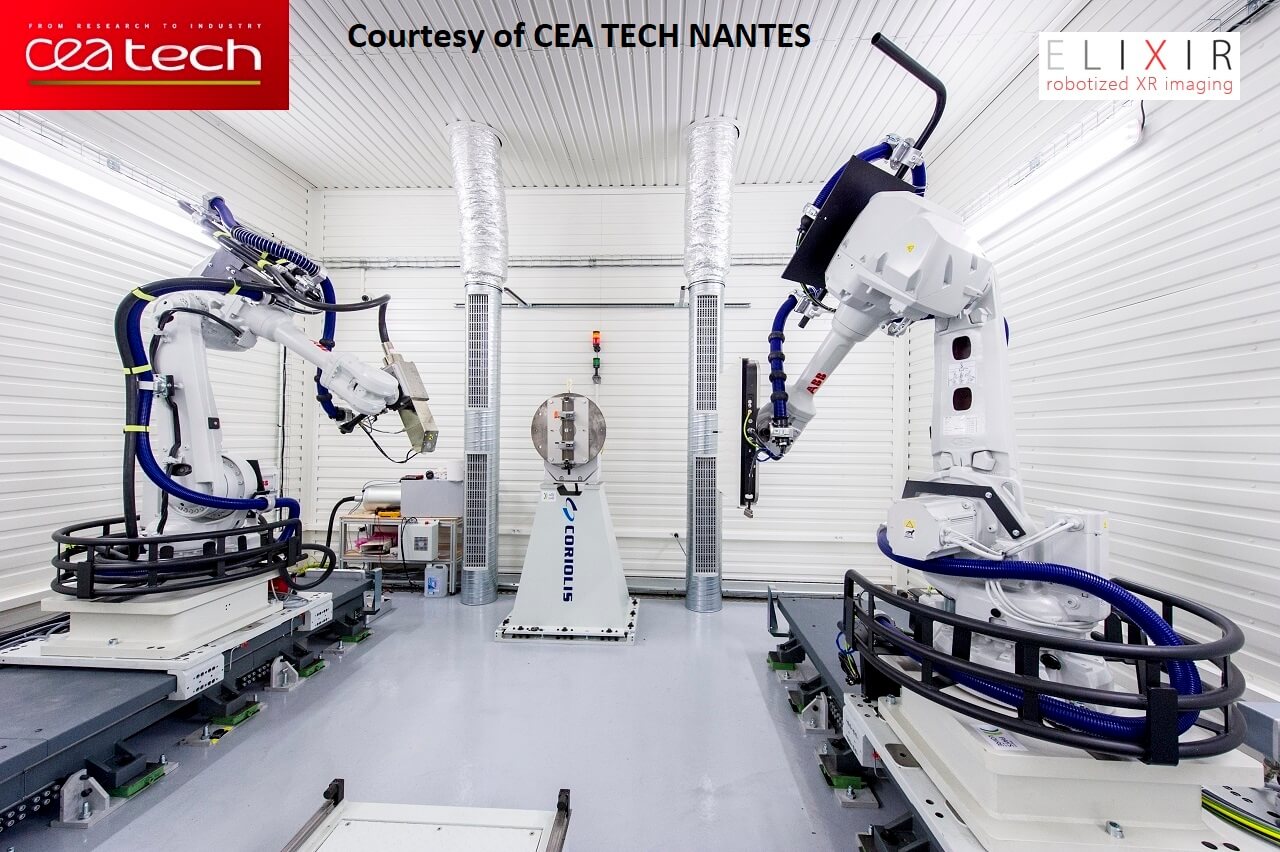Are robots the way forward for CT scans?

Robots against the rest of the (CT) world
X-ray tomography is still perceived as a technology with a very restricted geometry, in both medical circles and the industrial sector. In medical use, the patient is lying down and the mechanical element (the detector and the tube) turn around him. In industry and the sciences, the opposite occurs: the object turns on an axis (which is not acceptable for a patient!) and the system is fixed during acquisition of the image. This approach guarantees a level of precision and adaptability to the different magnification which is far superior to a medical system with a fixed focal length. Over the years, situations have come up that pose problems that cannot be solved using classic geometry. Particularly in the medical sector, the patient is lying down, so it is impossible to carry out stand up patient examinations to diagnose joint or vertebra pathologies in real situation. Similarly, in industry there are voluminous items that cannot be loaded onto a rotating axis. This is the case with wind turbine blades, airplane wings or subsets that are part of a structure that cannot be taken apart. It was therefore quite natural that the idea of fixing a source and a detector on robotic arms came up, particularly as they are now used everywhere in the industrial sector and the price, precision and quality of the control software makes this solution perfectly viable. Surgeons often use robots in interventional surgery for this reason, thereby proving the high level of reliability and repeatability of robotic equipment (see the Da Vinci interventional robot).
Robots have a screw loose
It was in 2014 that the concept of a CT scan using a robotic arm was presented by company 4DDI at the RSNA trade show. This system consisted of an industrial robot carrying the source and a second unit carrying the detector. The system existed in a 4-armed version (2 sources and 2 detectors or with 2 arms: one source, one detector). Considering the degree of maturity of robotic techniques, we might wonder what has slowed the spread of this type of approach in tomography. It should be understood that the main interest in this approach is to be able to get away from circular trajectories since robot-based systems were not created to end up applying the same simple circular trajectory as in a classic cabinet. The interest here is to be able to trace a free, non-circular trajectory that meets the requirements of the element’s shape. However, we know that analytical-type algorithms are not good for non-conventional trajectories. If we move away from circular trajectories, only iterative algorithms offer a solution to this problem. But before the advent of graphics cards, calculators were simply not powerful enough to solve this problem within a time that was compatible with user requirements.
At Digisens we tamed robots to be CT compatible
Now, Digisens has solved this issue of calculation time and, in collaboration with Nantes CEA TECH, is capable of demonstrating the advantages and performances of this type of platform. The equipment, consisting of two robotic arms made by Coriolis, is capable of rolling out a real inspection strategy. The operator can use a rapid 2D radio analysis to screen and find the risk areas. In case of doubt, a tomosynthesis or tomography analysis can be carried out. The robots coordinate with each other to take the number of images needed and to send the images and the geometry to the Digisens calculator. This large-scale installation is obviously interesting for the aviation and wind turbine industries but can also be interesting on a smaller scale for examining works of art, as well as for medical purposes of course. We will conclude by saying that a robotic CT is a credible alternative to classic scanners because of its 2D/Tomosynthesis/3D versatility for voluminous elements and its unique capacity to find its place on the shop floor.

